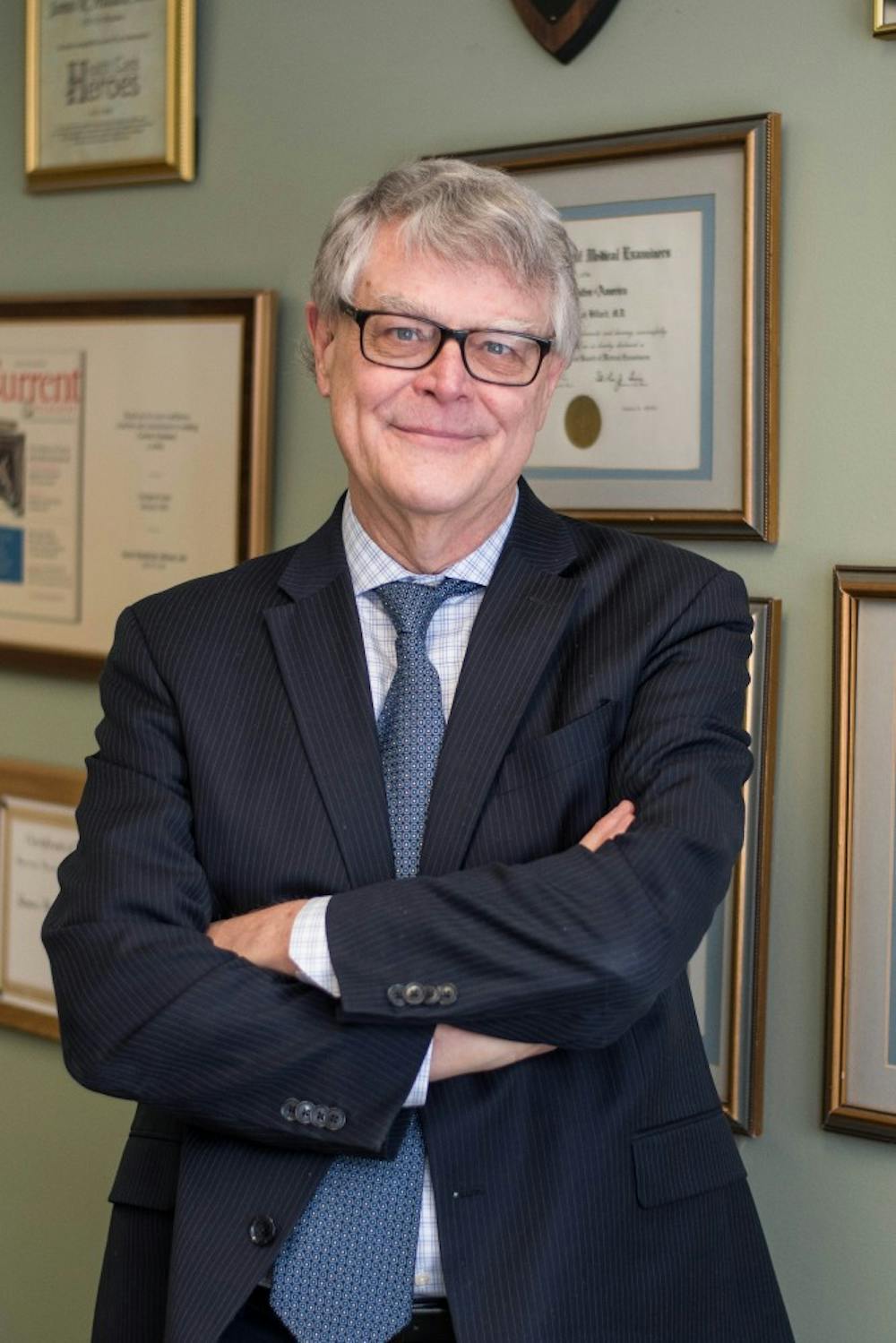Campus psychiatrist explains the effects of seasonal depression

Many people complain about having a case of the "winter blues," especially when severe winter weather arrives at Central Michigan University like it did last week. University psychiatrist James Hillard has researched seasonal depression for years.
Now, he is offering more insight about the disorder better known as seasonal affective disorder (SAD). According to Hillard, about 5 percent of America's population suffers from SAD. It's a subtype of depression that occurs in some people at the beginning of winter when the days are shorter and the skies are usually overcast, blocking out the rays of the sun. Hillard wants you to know that SAD is real and there are things you can do to make yourself feel better.
Central Michigan Life: How long have you been researching SAD?
Hillard: I did my medical school in California and then my residency in North Carolina. SAD was only recognized in the 1980s. I had finished my residency in the '80s and I was, at first, skeptical.
I didn’t see much of this in North Carolina and the other western and southern states I had been in. Prior to moving to Michigan, I was at the University of Cincinnati for a long time and started believing.
After living in Michigan for the past 10 years, I’ve realized that this is a relatively frequent disorder that is frequently not recognized. Since then, I’ve been obsessed with it and have been trying to help those suffering with it.
So SAD is more common in Michigan than it is in southern states?
It’s very clear that it’s related to how much darkness you are exposed to. In the United States, you have a maybe 2 percent of people with SAD, but in Alaska, it’s around 10 percent, and in Michigan, it’s around 5 percent. With the shorter days in the winter, many people are driving to work or school while it’s dark. Then (they are) driving back home when it’s dark, so the lack of sunlight is a huge factor.
When it’s so cold, many don’t want to go outside and don’t get the needed sunlight before it’s dark again.
What are some common symptoms of SAD?
People with SAD are likely to experience usual depressive symptoms: insomnia, not eating, no energy, no interest in things. A lot of people get what we call subsyndromal seasonal mood changes. So the range of SAD can be from a very mild case to something that is very severe. Most of the severe cases of SAD, however, have been with people who have experienced depressive episodes in the past.
Has there been any indication that college students are more susceptible to SAD than others?
People who spend more time outside, like students do in the summer, tend not to get (SAD) as much. When winter hits, and many students are sometimes in a class or studying all day, they don’t get out much.
What are some inexpensive,easy remedies that students and others suffering from SAD can use to feel better?
Being outside on a sunny day and exercising regularly can help. Some people with a severe case of SAD might find relief with anti-depressants or other medication as well. (These) are no more effective than light therapy with a light box. I’ve actually been trying to encourage patients to try light therapy more often and have been thinking of even buying more light boxes and lending them out to people for them to try.
What services does CMU offer to students, staff or faculty who may suffer from SAD?
I think a lot of students don’t know that we have psychiatry services on campus. We have two psychiatrists on campus. The only other psychiatrist in Isabella County just retired, so I’ve been (seeing) more university faculty as well as students. Apart from the psychiatric clinic, the university counseling center can also be a great source of help for people who suffer from seasonal depression.
For those suffering from SAD or any depressive disorder, appointments with Hillard or Castellon can be set up by calling the psychiatric clinic at 989-774-6599. Students and faculty can also contact the counseling center to schedule an appointment to meet with a counselor.






